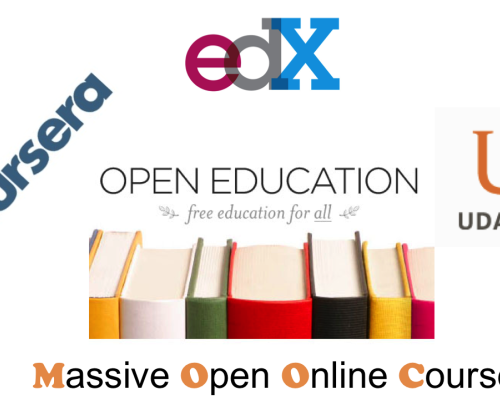The Move to MOOCs
Date
MOOOve over online courses: MOOCs are the next big trend in higher education.
The term MOOC stands for a Massive Open Online Course. Essentially, they are fully-online courses designed around lectures, discussion, and some type of assessment- but with their own unique distinctions. Traditional online courses charge tuition, offer credit, and limit student enrollment to allow for more interaction with the instructors. The MOOC, on the other hand, is usually free, usually credit-less, and (as the name implies) massive.
Enrollment requirements for MOOCs are simple: all you need is an Internet connection, some free time, and a personal desire to learn. For this reason, the classes are often massive in size. It would be impossible for faculty to respond to all students individually, so the MOOC instructional design and interactivity counts for a lot. For a more personalized experience, some classmates form local study groups or participate in online discussion forums. Additionally, most MOOCs have homework assignments and exam requirements for course completion.
According to the New York Times, the evolution of the MOOC knits together education, entertainment, and social networking. The hope is to create high-quality education that is not constrained by geography, finances, or a lack of opportunity. Its idealistic intention is to disseminate educational equality, thereby leading to a more truly global and collaborative society.
The MOOC is not without its challenges, however. Common complaints include the lack of prerequisite skills or common background knowledge, leading to students who are out of their league pulling down the level of class discourse. The massive nature of a MOOC often means a lack of student accountability or incentive, leading to low completion rates. And then there is the issue of assessment. Many MOOCs utilize a peer grading system, in which you grade the assignments of 5 other students. In turn, you receive feedback from 5 individuals. It is a worthwhile effort, but without monitoring or real accountability, cheating and plagiarism are hard to regulate. Given the scale of the courses, the online types of student assessment that can be accomplished are superficial.
At first glance, I think the overall idea of MOOCs is both intriguing and promising… but the devil is in the details. It’s true, MOOCs have the potential of delivering high-quality education to the farthest places in the world, or people without privilege who are interested in learning more about, say, quantum physics, but don’t have the means to continue their education.
For the sake of advancing personal knowledge or gaining valuable job-related skills, MOOCs have great potential. I would definitely encourage anyone outside of college to pursue their interests in a massive open online course. However, I would think twice when considering MOOCs as a replacement for college courses. There is a unique dynamic in traditional classrooms, and even in smaller online courses, that MOOCs simply can’t provide. In face-to-face courses and small online workshops, students discover that they are part of a learning community, in which each person has a responsibility to contribute to the overall collective knowledge of the group. Personal interaction is rewarded, and small-group dynamics are an important part of the educational experience.
While I don’t foresee a day when Harvard will have to close its doors to MOOCs, I do think that there is exciting potential for these courses to reshape how we view the system of higher education and global learning. At the very least, I can pursue a new hobby of becoming a quantum physicist. And maybe add 18th-century literature to my LinkedIn profile.
For more information:

